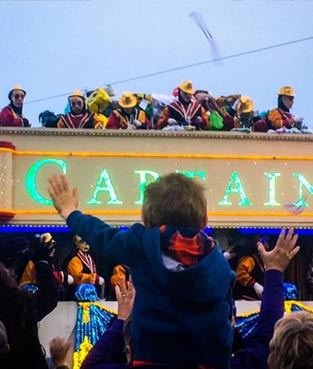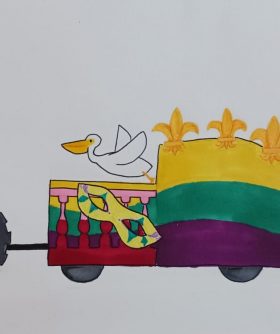Treme
Buckjumpin' & Havin' Fun
Located on the northern border of the French Quarter above Rampart Street, Tremé is a uniquely historic neighborhood--one of the oldest neighborhoods in New Orleans. Early in the city's history, it was the main neighborhood of free people of color, and remains an important center of the city's African-American and Creole culture, especially the modern brass band tradition.
The modern Tremé neighborhood began as the Morand Plantation and two forts—St. Ferdinand and St. John. Near the end of the 18th century, Claude Tremé purchased the land from the original plantation owner. Within a few decades, the Carondelet Canal was built from the French Quarter to Bayou St. John, splitting the land. Developers began building subdivisions throughout the area to house a diverse population that included Caucasians, Haitian Creoles, and free pe of color.
Tremé abuts the north, or lake, side of the French Quarter, away from the Mississippi River—the "back of town," as earlier generations of New Orleanians used to say. Its traditional borders are Rampart Street on the south, Canal Street on the west, Esplanade Avenue on the east, and Broad Street on the north. Claiborne Avenue is a primary thoroughfare running through the neighborhood. At the end of the 19th century, the Storyville red-light district was carved out of the upper part of Tremé; in the 1940s, Storyville was mostly razed and made into a public housing project. This area is no longer considered part of the neighborhood. The "town square" of Tremé was Congo Square, originally known as "Place des Nègres," where slaves gathered on Sundays to dance. This tradition flourished until the United States took control of Louisiana, and officials grew more anxious about unsupervised gatherings of slaves in the years before the Civil War.
Congo Square was also an important place of business for slaves, enabling some to purchase their freedom with proceeds from sales of crafts and goods there. For much of the rest of the 19th century, the square was an open-air market. "Creoles of Color" brass and symphonic bands gave concerts, providing the foundation for a more improvisational style that would come to be known as "jazz". At the end of the 19th century, the city officially renamed the square "Beauregard Square" after Confederate General P.G.T. Beauregard, but the neighborhood residents seldom used that name. Late in the 20th century, the city restored the traditional name of "Congo Square".
Musicians from Tremé include Alphonse Picou, Kermit Ruffins, Lucien Barbarin, and "The King of Treme," Shannon Powell. While predominantly African-American, the neighborhood's population has been mixed from the 19th century through the 21st. Jazz musicians of European ancestry, such as Henry Ragas and Louis Prima, also lived in Tremé. Also, Joe's Cozy Corner in Tremé is often considered the birthplace of Rebirth Brass Band, one of New Orleans' most notable local groups. Alex Chilton, who led the rock groups Big Star and The Box Tops, lived in Tremé from the early 1990s until his death in 2010.
Tremé has recently gained much exposure via the HBO series "Tremé". The series is shot on location, and stars many local musicians, actors, artists, and personalities. The series begins three months after Hurricane Katrina, and focuses on the residents of New Orleans, including musicians, chefs, Mardi Gras Indians, and other New Orleanians trying to rebuild their lives, homes and the city's unique culture in the aftermath of the 2005 disaster. While the series has been met with various levels of criticism and praise from New Orleanians, it has undoubtedbly had a positive effect on city tourism.



